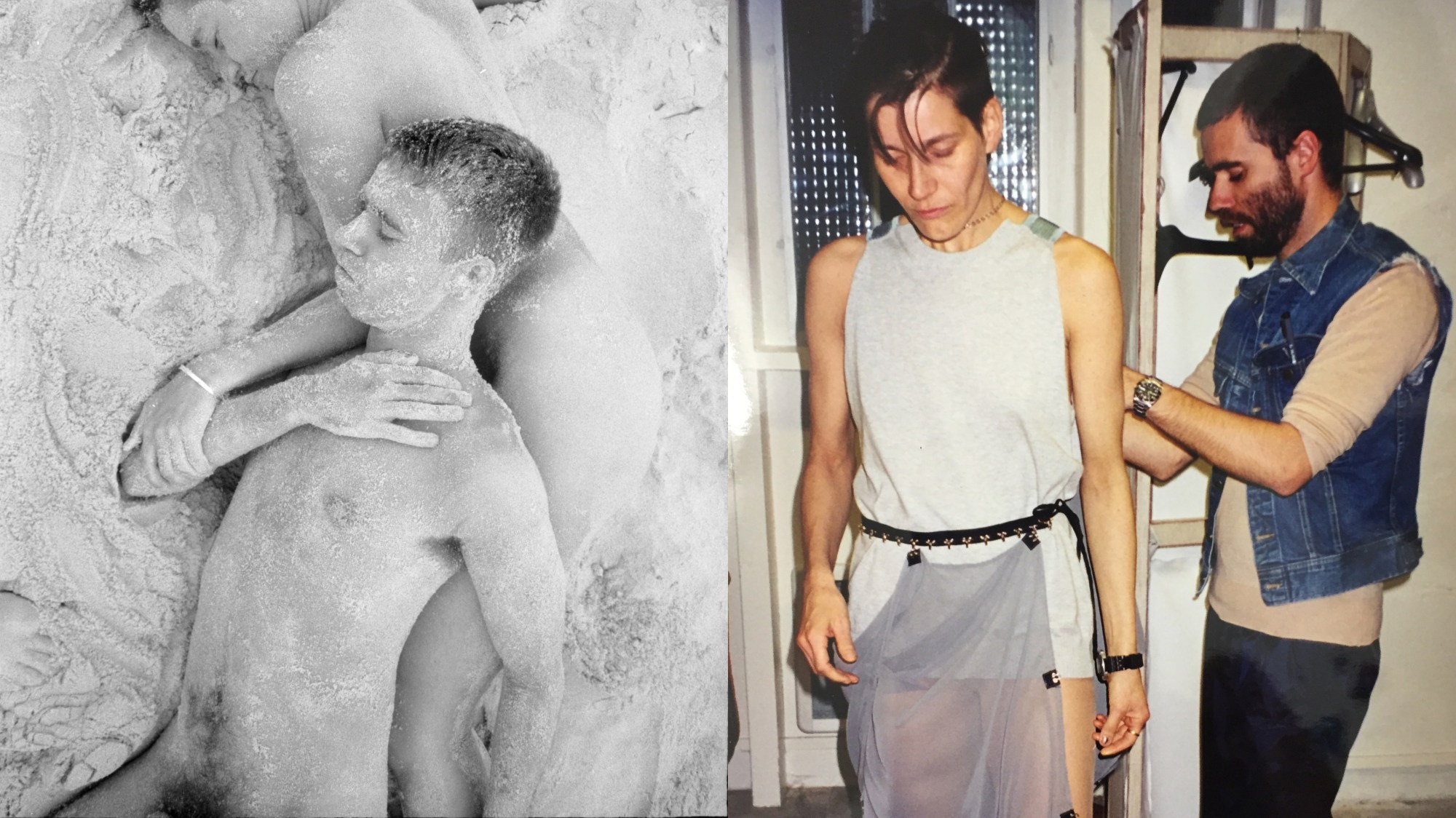Working on a project with a close friend is usually the kind of thing you dream up over drinks and hardly ever get to put into reality. Not so for Berlin-based Alexandra Bircken — a former designer and present-day artist creating “non-functional objects” — and Paris-based Lutz Huelle, who launched his eponymous label in 2000 after working for Martin Margiela for three years. Friends since they were teens, the two were shaped by the same music, by the magnitude of the Berlin Wall coming down, and by the desire to move to London to study fashion. Alexandra has modelled for Lutz since she was a student, and been in his official défilés too. Their friendship is rounded out by Wolfgang Tillmans, with whom they form a sort of loose creative throuple.
La Pensée Corps, an exhibition on view (through 28 January) at Fondation Pernod Ricard in Paris, joins together their worlds and the questions they scrutinise around identity, embodiment, functionality and deconstruction. The featured objects and garments highlight hybridity and interruption: be it Lutz’s half camel coat/half bomber jacket or Alexandra’s experiments with clean cutting, including a halved AK-47. Visuals from a shoot Wolfgang dedicated to Lutz (in 2019/2020, for Pop magazine) fold his gaze into the mix. The intimacy is evident (he has previously photographed Alexandra and Lutz naked in the sands of southwestern France, and Lutz and Alexandra feature repeatedly in Wolfgang’s current show at the MoMA).
While finalising the exhibition days before its opening, Alexandra and Lutz discussed mixing personal affection with artistic vision, the distresses of long versus short hair, and assessing where society is at beyond the fashion bubble.

You two have had an impressively long timeline: tell me more about it.
Alexandra: We went to school together — I moved to Remscheid in 1983 or 1984…
Lutz: 83.
Alexandra: …and a few days into school, I met Lutz and Wolfgang on the staircase in the space where we had breaks. I had really boring people in my class, and these guys stood out. We’ve been friends ever since!
How did they stand out? Like they already had good style?
Alexandra: Yes. And, like, an openness. I came from a small village in the Black Forest region, where there was not even a McDonald’s anywhere nearby. I could be the person I am with these guys. Lutz and I kissed once, and then I realised it wouldn’t go any further. There was no coming out. It was much more about fluidity and openness.
Lutz: She looked so amazing when I first met her…
Alexandra: …not anymore?! [laughs]
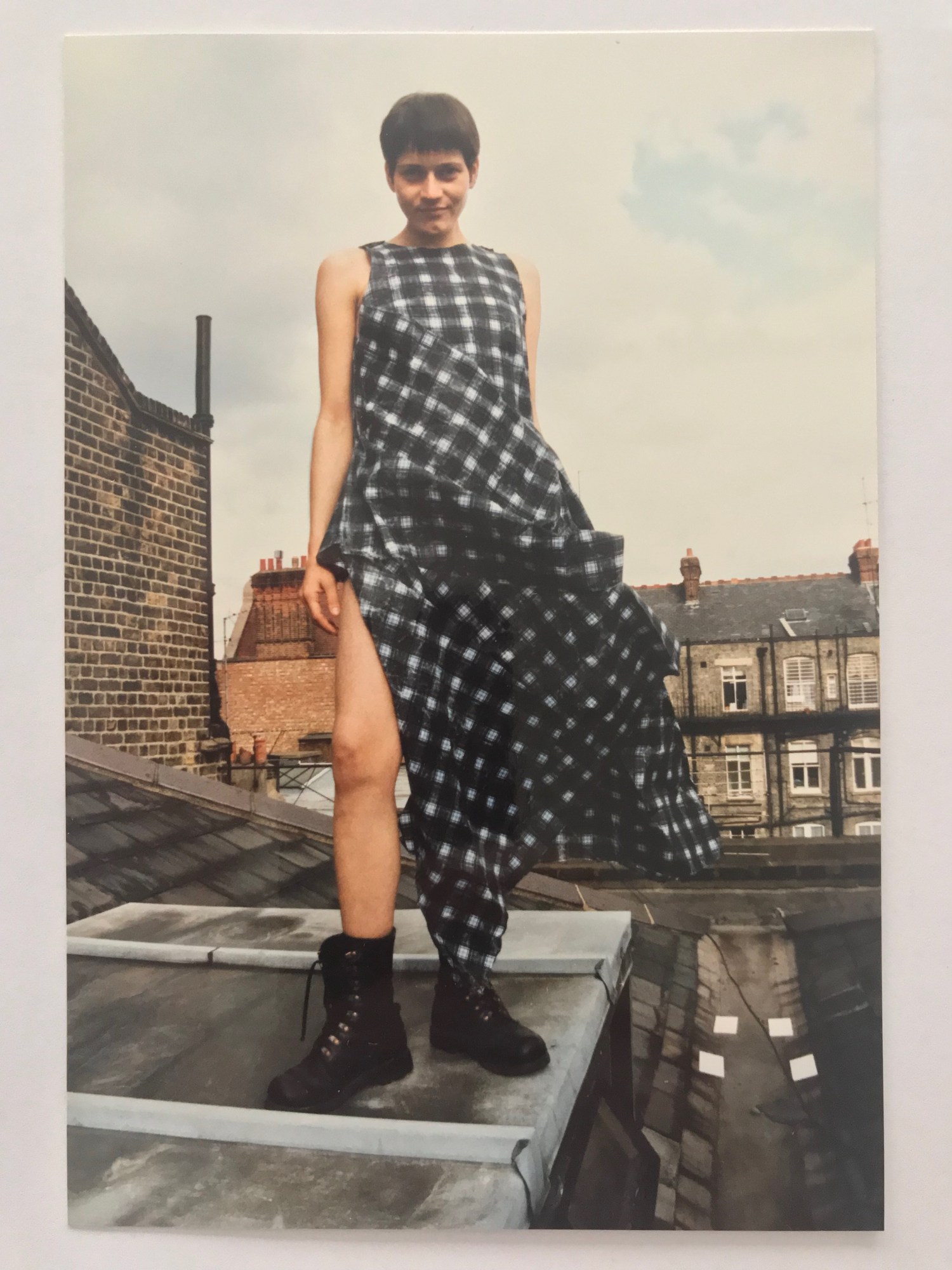
Mutual magnetism.
Lutz: We’ve always been obsessed by the same things, but we go at them from different directions. When we first became friends, it was because we shared a different idea of identity and the body and how you feel about yourself and how you see yourself. These things are in Alex’s work, and they have been a foundation in my work, and they’re in Wolfgang’s work. It’s always been the quest for identity, somehow.
Are there any particular works that created a back-and-forth between you?
Alexandra: There are interesting incidents we hadn’t planned. The way the austerity of one piece picks up the formalism of another.
Lutz: And how similar the shapes are, in the end, when you don’t think about what they are for.
Alexandra: The body as vessel — like a container and shield. My work is about protection and armour at the moment. It’s like a cage: something’s happening inside but you can’t get in. It’s a protective barrier… Not just because there’s war. Clothing is just like that.
Lutz: I take the stereotypes, these things that exist, and push them somewhere else, to say that they’re never just one thing. With the bomber jacket, there’s the green of the military with the beige of the bourgeoise together. I cut the shape of the garment and let it fall, drape. The beige of the jacket resonates with the beige of Alex’s piece made out of tights — this whole thing of femininity.
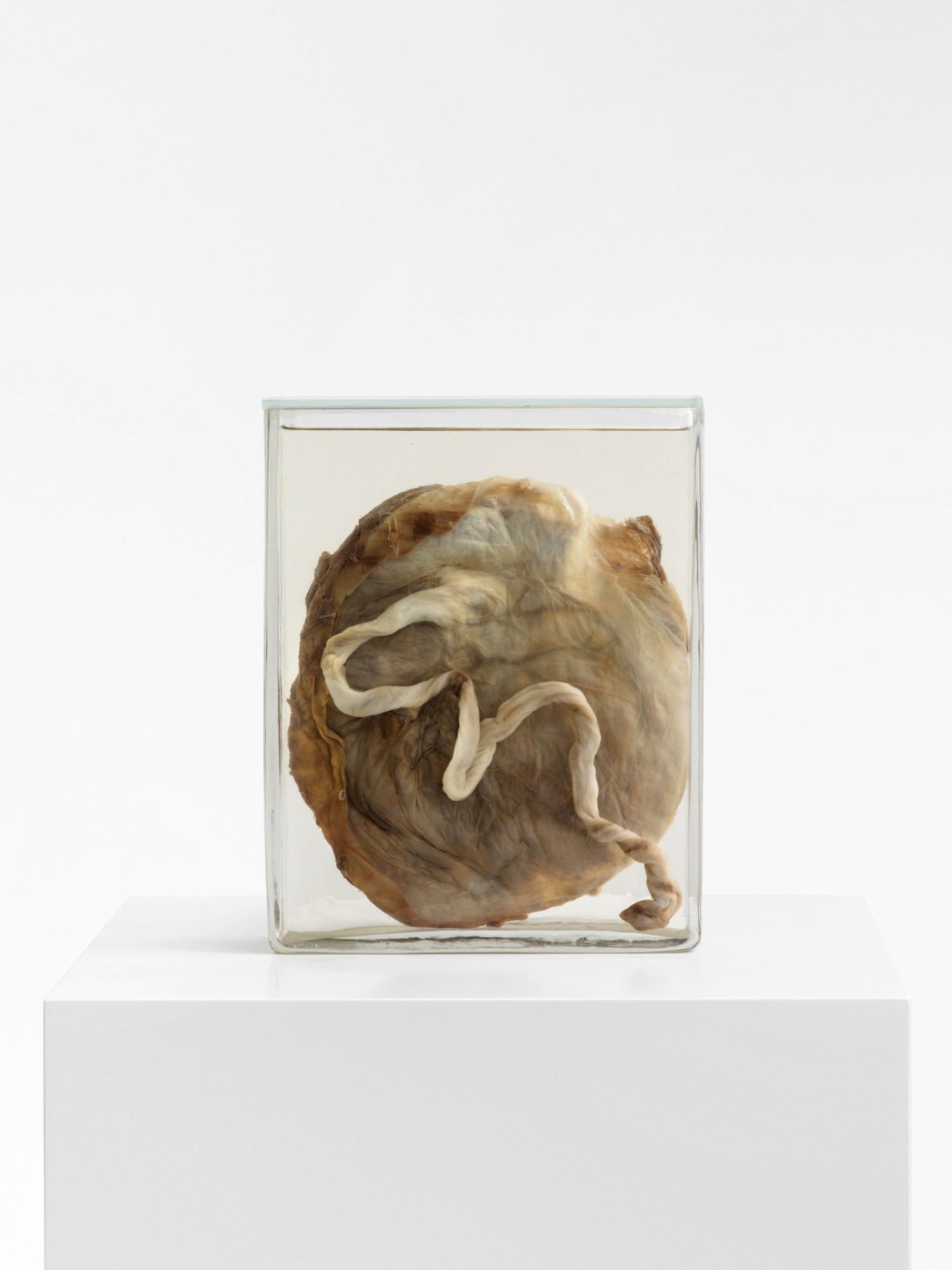
Would you describe the garments as androgynous or genderless? Was that specific to this exhibition, or part of your original design thinking?
Lutz: I’ve never actually felt properly like a man, but I don’t feel like a woman either. I just feel I need to be open enough to not have to decide. That was one of the reasons why I became a fashion designer, because I thought if there’s nothing around me that defines how I feel. It’s not even about genderless, or all these kinds of things that exist now — people actually put words onto these things! I mean, 25-30 years ago nobody did that. It was just, you know, there were drag queens, and there were transsexuals. And that was it. But there’s such a huge spectrum in humanity. And I think that one of the reasons why [Alex, Wolfgang and I] became such good friends was because all three of us feel like that. We don’t want to be defined. Weirdly enough, fashion puts people into compartments. It’s very conservative. But it’s changing.
Does it feel like, because of the industry structure, you must think in those womenswear/menswear typologies?
Lutz: I mean, we do sell to women’s stores. But I’ve always also done men’s clothes for women, because I’ve always loved men’s jackets on women and it’s this kind of strength that masculinity talks about — which sounds ridiculous, right? Why are men strong, and women not? But it’s interesting that today you can talk about it and people actually understand, whereas 20 years ago, that was impossible.
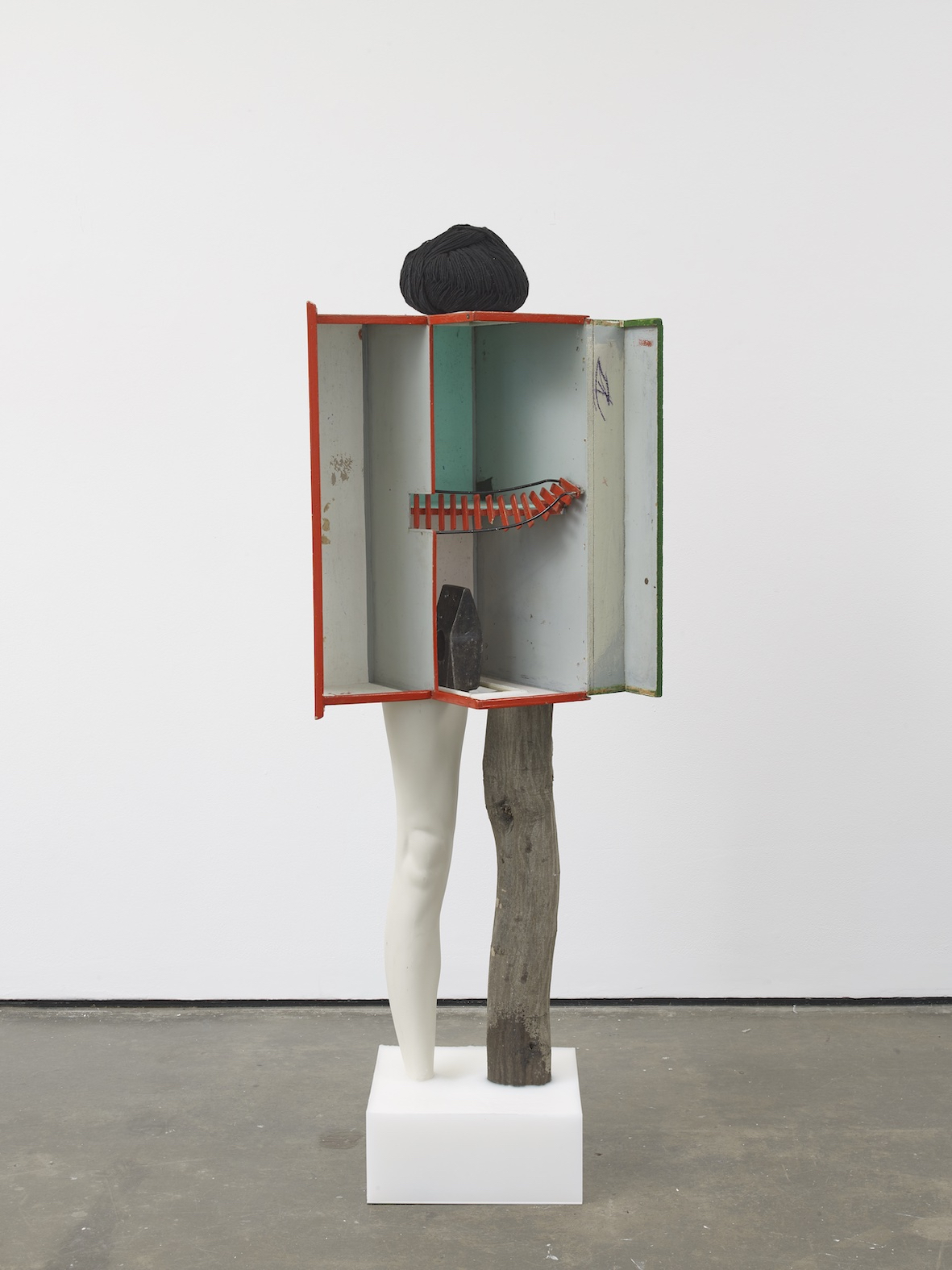
Both of you teach as well as create, so you’re seeing the way new generations are expressing themselves. Does it feel like you’re dealing with another mindset with the younger generations?
Alexandra: I mean, I find it to be very much about the bubble that we’re in. The people we deal with are educated. My daughter is 23 years old, and she’s in a different bubble. I have battles with her that she thinks the guy — even if he has no money — pays. This is crazy. And feminine beauty standards, like hairless bodies and the idea of slimness… Despite all this gender fluidity: the models have to be slim. Optimising their bodies. You don’t see anybody with pimples. This hasn’t changed! I think there’s a long way to go. We’re in a bubble. And me, as a woman always with short hair, I’m still… rare. If you look at all the beauty products, it’s such a big industry to try to ‘be that person’. Despite moving forward, we’re moving backwards, in many ways.
I think that’s accurate. And, ironically, the people who need to be challenged the most are the ones who are the least likely to encounter anything alternative.
Lutz: I mean, it’s true… You forget, sometimes, that we are in the bubble. Because I always feel that the world has changed, but then has it really… But, you know, the fact that we’re actually talking about this now means it has changed, because it’s in the open. It’s maybe not accepted yet. But the doors are open, we just have to go through them. Well, we’ve come through already. Other people have to follow. But at least these things are talked about. And they weren’t, 30 years ago — it was never a question. You have to be a certain way, and that was it. And if you weren’t, you were a freak.
Alexandra: It feels like, on the surface, everything’s fine. But the politics and the structure aren’t. We still have to fight. So much of my work deals with this, taking the ‘feminine practice’ of the woman at home, knitting and sewing for the family, away from there. Textile is such an iconic thing, braiding, knotting, knitwear… The development of our society wouldn’t be there, you know, if we hadn’t been able to make a second skin.
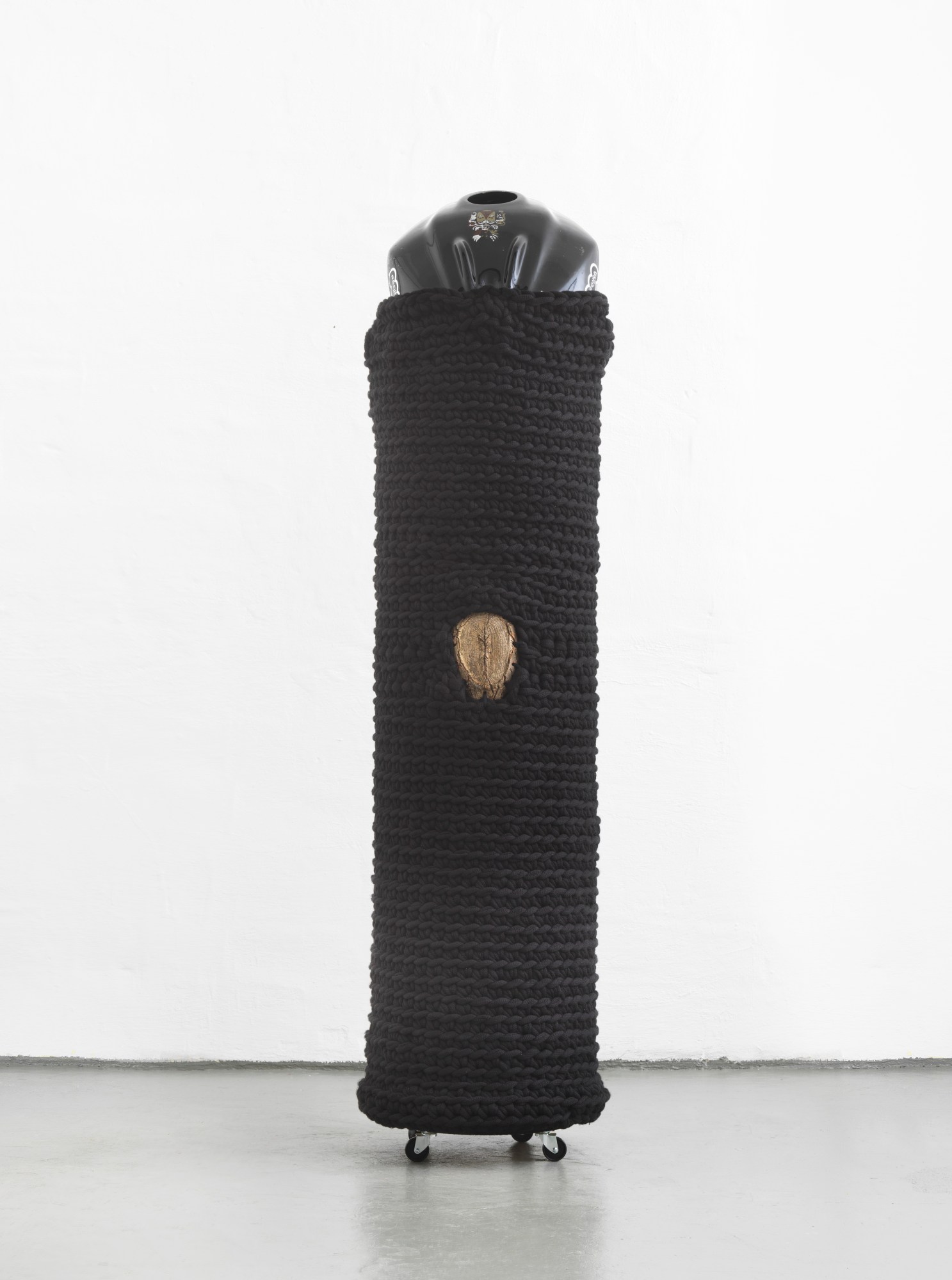
How did your conversations as friends prep you for this formal collaboration? These things that you’re examining and comparing now in each other’s work — graphic choices, craftsmanship — have you been discussing these all along or did this bring things to the surface more concretely?
Lutz: It came together now. But we’ve changed things around a lot — another suitcase arrived.
Does that mean you’re gonna potentially do another exhibition?
Lutz: I have over 20 years of work — I could fill the Louvre! It’s also interesting because fashion is flimsy. Here today, gone tomorrow. It’s not something that’s serious. But sculpture is serious. Art is serious. So, to put these works on the same level — for some people, it isn’t the same level. But I never make any distinctions between what is supposed to be popular culture or kitsch or serious. If it touches something, then it’s okay for me.
You mean fashion is somehow less deserving? Is it because it has utility as well?
Lutz: Because it’s something that’s done quickly. It’s not intellectual. But at the same time, it is a process, like any kind of creation, if you make a film, or if you write. It’s all on the same level.
Especially in a Parisian context, where fashion is given real consideration.
Lutz: More than anywhere else in the world. The French have always seen it as something that defines culture. I mean, that’s why I came here. If there’s one place where this is taken seriously, it’s Paris. Here these kinds of things mean something; they’re not just, you know, vanity objects. They are true beauty.
‘La Pensée Corps’ is on view through 28 January at Fondation Pernod Ricard, Paris
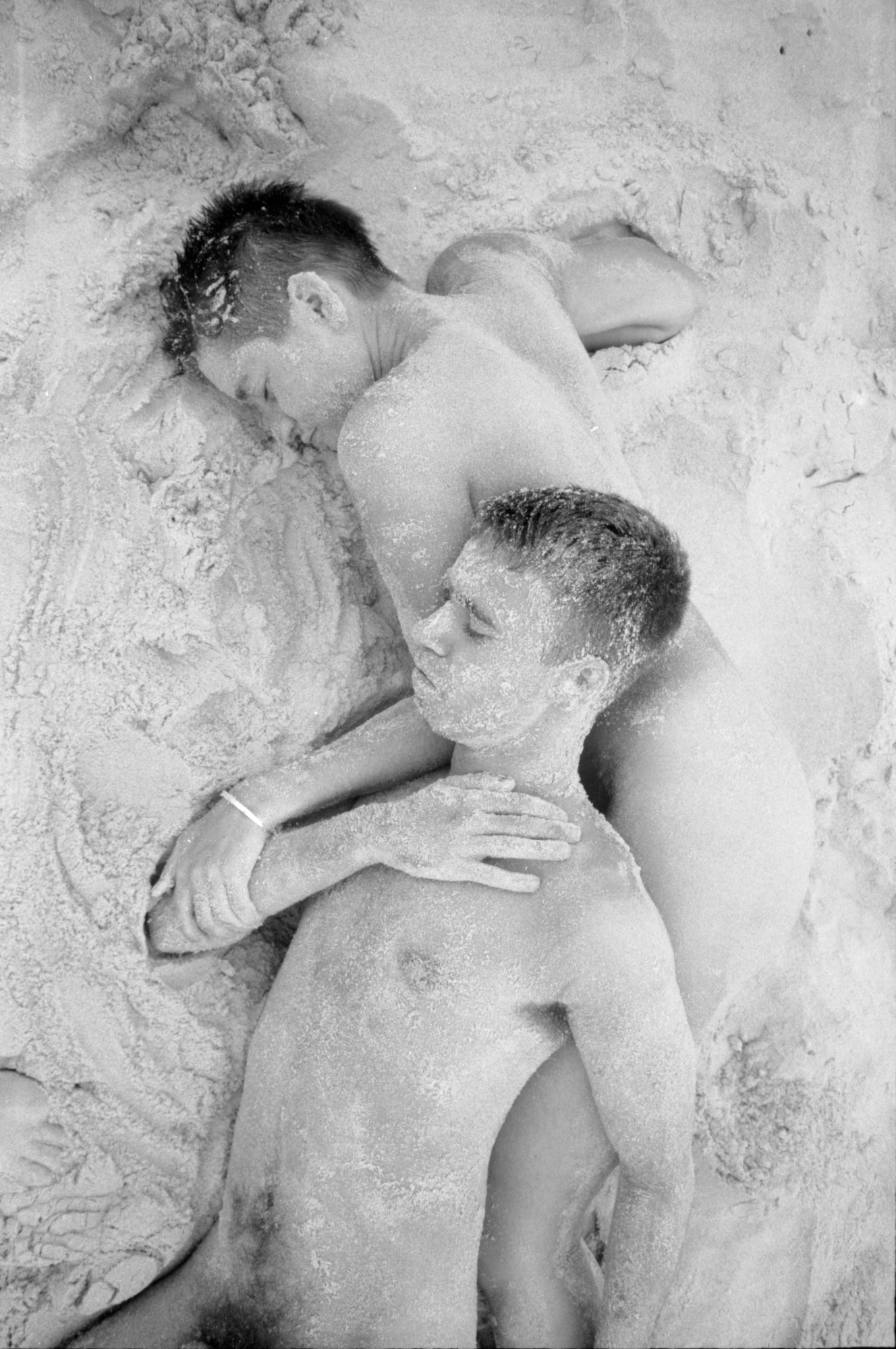
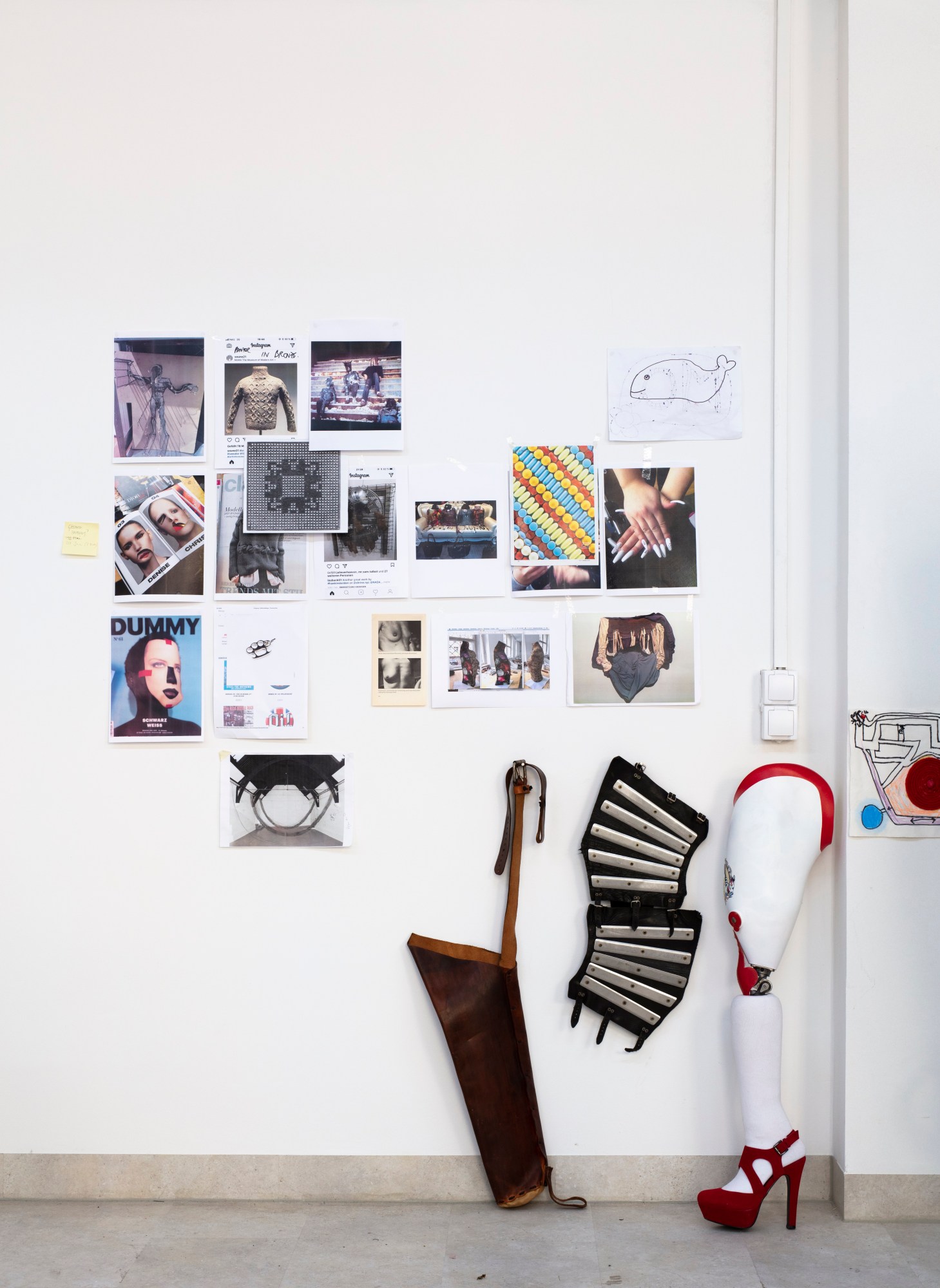
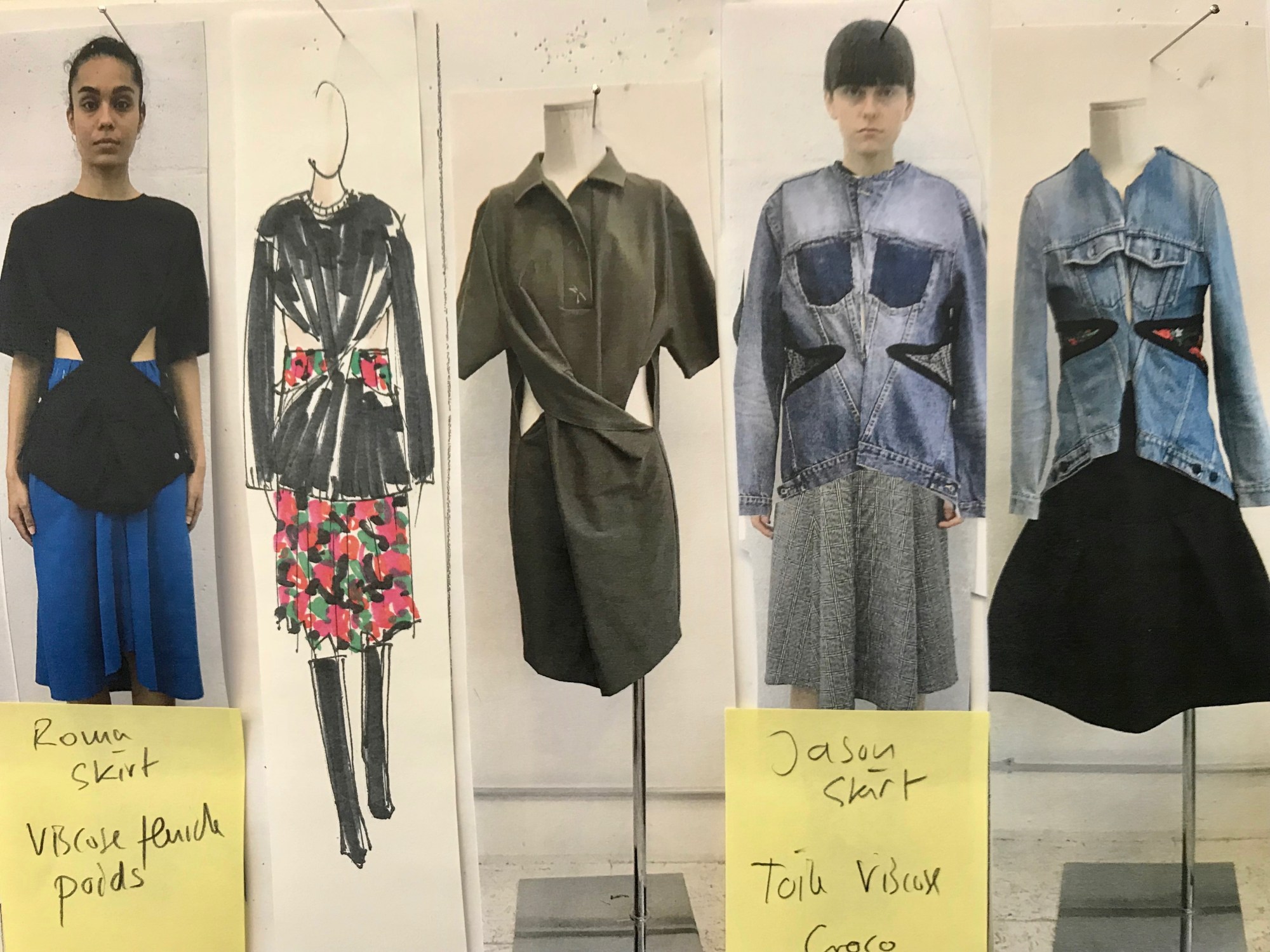
Credits
Images courtesy of Alexandra Bircken and Lutz Hulle
